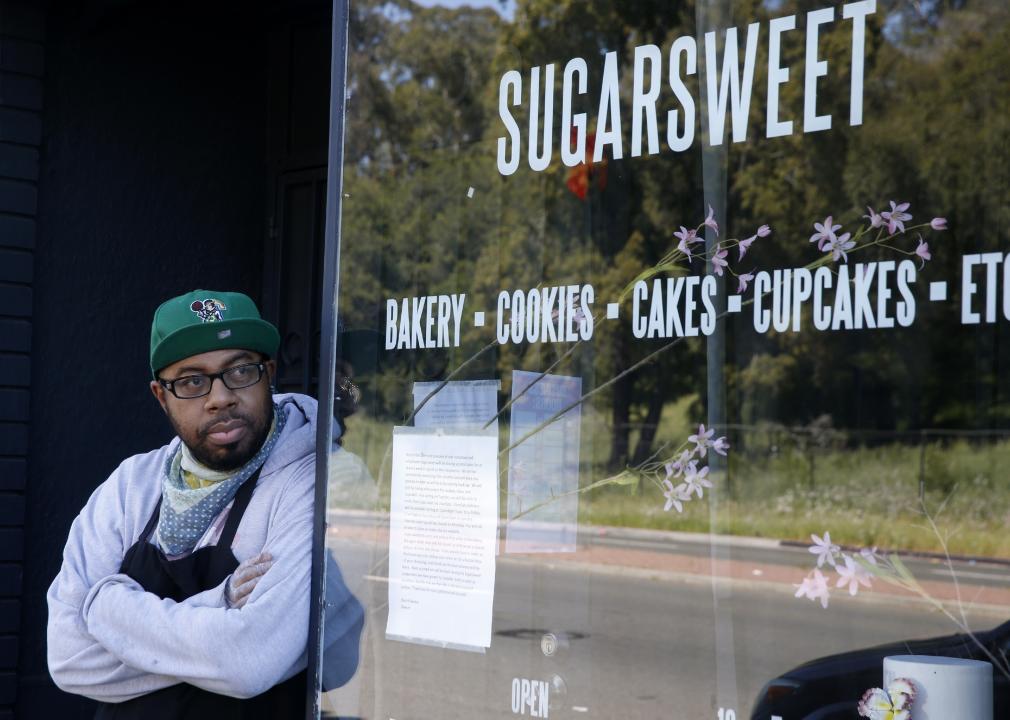5 of the biggest perceived problems that small-business owners face
Published 2:30 pm Thursday, July 21, 2022
Paul Chinn/The San Francisco Chronicle // Getty Images
5 of the biggest perceived problems that small-business owners face
Small businesses are the driving force behind the U.S. economy. Before the pandemic, they accounted for 43.5% of the country’s gross domestic product (GDP) and created two-thirds of new jobs, according to the U.S. Small Business Administration.
For many small business owners, the pandemic severely impacted the health of their business, requiring them to adapt to an uncertain climate. Online business insurance agency Simply Business looked at the National Federation of Independent Business’ April Small Business Economic Trends survey to find the top five issues small-business owners say they’re facing today. The survey was comprised of 1,457 small business owners/members of the foundation.
According to the survey, small-business owners feel generally pessimistic as the economy faces many uncertainties as the world emerges from the pandemic. The share of owners expecting business conditions to get better in the next six months reached the lowest level in the survey’s 48-year history. Issues contributing to the negative outlook range from government regulations to inflation, which is at the highest level since 1980, and which almost a third of business owners say is their most important problem.
![]()
Alexi Rosenfeld // Getty Images
#5. Cost of labor
– Share of business owners who say this is their top problem: 8%
Labor can account for 50% to 60% of the total business cost, per an analysis conducted by Deloitte, making it a significant aspect of a business. U.S. labor costs increased 4% since last year, the highest increase since 2001—an indicator of a tightening job market. Accounting for seasonal adjustment, 46% of owners said they had raised employee pay, and 27% said they planned to do so in the next three months, according to the NFIB study. The study also found that among owners who saw lower profits, about 11% blamed higher labor costs for the drop in revenue.
Steve Pfost/Newsday RM // Getty Images
#4. Government regulation
– Share of business owners who say this is their top problem: 8%
Over the past century, government regulations for small businesses have increased in both quantity and complexity. These mandates vary across industries and states and can apply to many parts of a company’s operations. Examples of operational rules include requirements for tax codes, environmental regulations, and labor laws for workplace health and safety. Sales regulations outline how companies can advertise services, sell goods, and protect customer privacy. Other legislation has set rules for insurance, accreditation, and licensing for different types of industries.
Paul Chinn/The San Francisco Chronicle // Getty Images
#3. Taxes
– Share of business owners who say this is their top problem: 14%
High taxes not only incur financial costs, but also administrative costs as owners need to spend time and resources to make sure they’re complying with tax requirements. Many businesses also hire accounting professionals to prepare their taxes.
According to the NFIB, 77% of small-business owners find federal business income taxes the most burdensome. Coming in second is payroll tax, with 69% of survey respondents citing it as burdensome, followed by state and local taxes (66%), property tax (63%), and unemployment tax (55%).
Robert Alexander // Getty Images
#2. Quality of labor
– Share of business owners who say this is their top problem: 23%
More than half (52%) of small-business owners said it has gotten harder since last year to find quality labor, according to a 2022 CNBC survey. But finding quality labor is only one part of the problem; keeping qualified employees has also become a point of concern for business owners. Unlike large companies, small businesses often don’t have a dedicated in-house HR team to help find, onboard, and retain quality workers. Small-business owners also often don’t have the same leverage to offer the same benefits and perks as large corporations.
Steve Pfost/Newsday RM // Getty Images
#1. Inflation
– Share of business owners who say this is their top problem: 32%
Since September 2021, a whopping 84% of small-business owners say that increasing inflationary pressure is one of their top challenges, according to a January 2022 survey by Goldman Sachs.
Inflation can shrink profit margins and increase the cost of raw materials or services, which leads businesses to hike up prices. To counter these rising costs, small-business owners might source locally for goods or maintain a minimum inventory. As supply chain and pandemic-era challenges persist into 2022, small-business owners are pessimistic about inflation relief.
This story originally appeared on Simply Business and was produced and
distributed in partnership with Stacker Studio.











